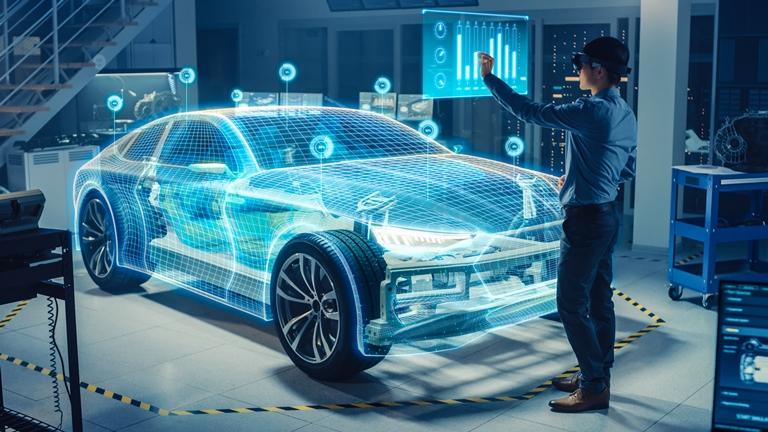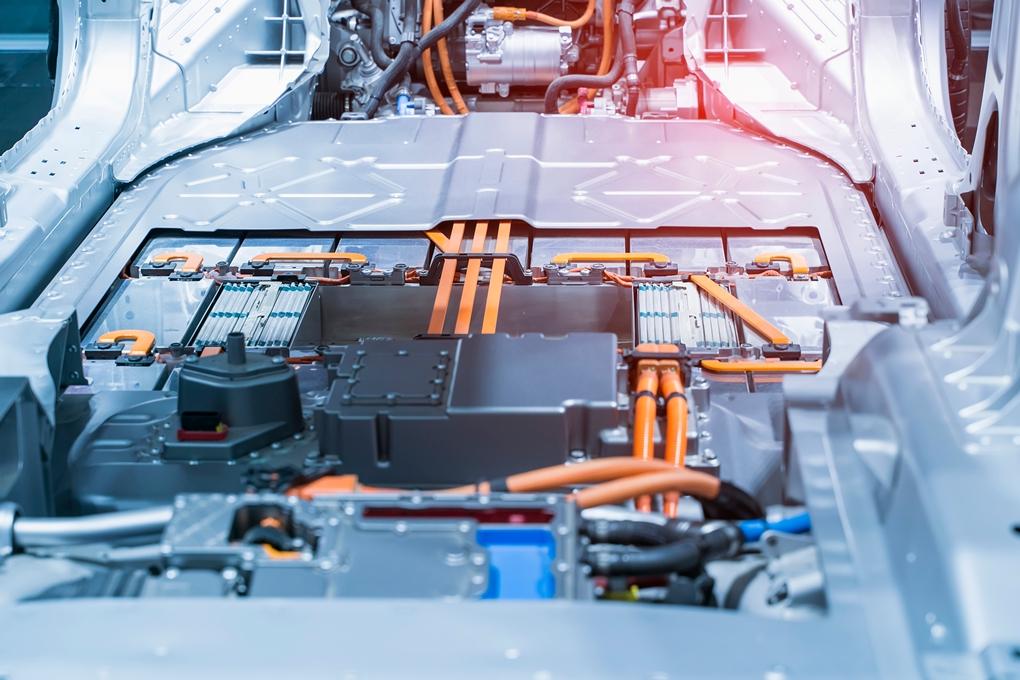
Data-driven, or “smart” smart manufacturing has evolved from being an abstract concept to a technological reality. It is not enough to feed real-time data directly from a machine or operation into a database or management system – it has to be constantly queried and analyzed in order to adapt to changes ranging from calibration through to adapting the design to meet changing market preferences.
Automotive Industries (AI) asked Cliff Rice, Automotive, Electric Vehicle and Battery Industry Consultant at Rockwell Automation, just how much the automotive market is expected to change in 10 years.
Rice: In 2031 we will be thinking mostly about electric vehicle infrastructure, and some hybrids. Of course, internal combustion (ICE) engines will still be around, but we will be dealing a lot more with electric vehicles (EVs). There will also be a higher percentage of autonomous driving and ride sharing.
And you combine these you see a trend towards more skateboard deck design platforms consisting of a drivetrain and deck with a body that can be swapped out. We really need to start thinking about the vehic

le as a product that has multiple owners through a lease model which also provides additional revenue streams.
Autonomous driving generates a whole new level of data. The people being transported do not need to focus on the road or traffic, which opens new and exciting opportunities.
To prepare for these shifts, OEMs need to get the data from vehicles currently on the roads into the business systems and manufacturing. That is a tough challenge.
AI: Will automakers abandon further development of internal combustion engines?
Rice: I’d say “yes” and “no”. Internal combustion engines have seen their heyday and electric vehicles are certainly the future. Every major brand owner has significant and aggressive targets to go to an all-EV or all hybrid infrastructure.
Some brand owners have announced that they are no longer investing in new ICE engines, but critically they all continue to optimize existing ICE engines.
And when we think about the transition from ICE to EV, I think there is a lot of corollaries with the transition from horse and buggy to the car. At the very beginning the auto was really only used in the urban regions, where we had better roads and gas stations.
The horse and buggy continued to be used in rural America. As the infrastructure got rolled out, rural America started using cars, but they still needed horses for the work on the farm. I think that is where we are at.
AI: Where do many computer-aided design (CAD), product lifecycle management (PLM) and automation platform systems fall short?
Rice: Existing systems by and large still struggle with integrating data from disparate third-party platforms. We are pushing for a more open data structure, with the ability to connect between the different systems. Very rarely do we see these tools connecting seamlessly with each other.
AI: How can digital twins change the lifecycle equation?
Rice: Digital Twins, especially for EVs, help improve processes by being able to evaluate and deploy quickly without adding a high level of risk to the existing manufacturing lines.
From a lifecycle standpoint what that means is it that, instead of going through a design, deploy, support and maintain equation, we can start thinking about continuingly improving lines and going into kind of evergreen production line if you will.
AI: How can Rockwell Automation Dynamic Digital Twin lower the risk of new technology implementations?
Rice: There are two very different aspects to lowering the risks when adopting new technologies. One is taking learnings from the past and others, and the other is how we test before we deploy. So, on the first one, Rockwell Automation has a global team that is focused on the automotive sector, with a sub-division focused on EV.
We take the lessons learned from our experience in working with automotive plants around the globe to help customers succeed. Testing is conducted in bite-size chunks in order to prepare new use cases for deployment at enterprise level.
We also have a document path for a wide range of products to guide us.AI: What do OEMs need to achieve flexible and scalable electric vehicle manufacturing?
Rice: When I think about flexible and scalable manufacturing, I think about being agile and fast moving. Our Digital Twin solution allows companies to develop and repeatedly verify lines offline to ensure that the design is optimal for use and production scaling.
Once we have the flow layout, we can develop the controls and test the PLC code before we even cut steel and assemble the line.
Clients can move quicker because the PLC code will have been commissioned by the time assembly of the line has been completed.
AI: How is Industry 4.0 reframing the automotive value chain?
Rice: When we talk about Industry 4.0 for the automotive value chain, I think about the vehicle as a source of data. Industry 4.0 has largely been about getting data from the machines into the business systems and I think we’ve gotten quite good at that.
We are dealing more with end users about how we can connect their data to their supplier’s data or to their product data out in the field. They want data from the car as it is being driven in order to tweak the manufacturing system or prepare repair centers to secure the components, they will need to service the car.
AI: What capabilities and features do EV and battery manufacturers need to produce enough to meet market demand?

Rice: From what I have seen, there are two very fundamental things that need to happen from day one. The first is the network. We need to develop the factories and plants with incredibly strong OT networks. And I emphasize the operational technology (OT) as suppose to IT, because there are different rules and protocols, and standards and needs out of an OT network compared to an IT network. If we do not start with a really strong backbone network, it is going to be impossible to hit the production volumes needed by leveraging all the data.
And the other factor that is foundational and often overlooked, is conveyance. If we look at the conveyance technologies being used in the average auto plant – they are technologies that have not changed in decades. This, the backbone of the manufacturing process, is the single highest source of failure in a plant.
We need to start really thinking about how we use technology to allow us to control the flow of the product independent of a conveyor belt. The value is not only in the inherent track and trace ability, but we can start to lay out lines and configurations and process flows that we never could before. We will be controlling the product directly instead of just the belt or the chain.
AI: What is next for Rockwell Automation?
Rice: There is a lot of exciting technologies across all the product lines, but one general trend you are going to see is more cloud hosted software and more scalable solutions where you can deploy the same solution at any level of stack as needed.












More Stories
DuPont materials science advances next generation of EV batteries at The Battery Show
Your Guide to Filing a Car Accident Claim
Steps to Take Immediately After a Car Accident